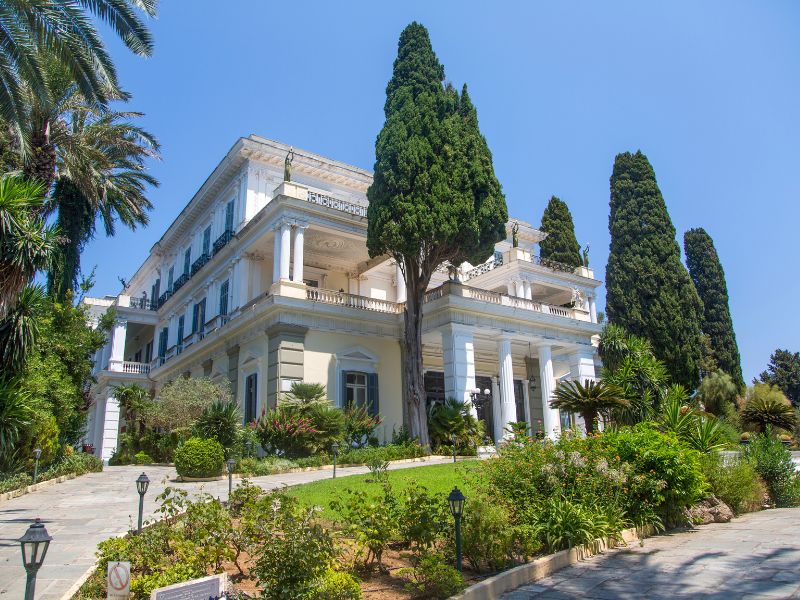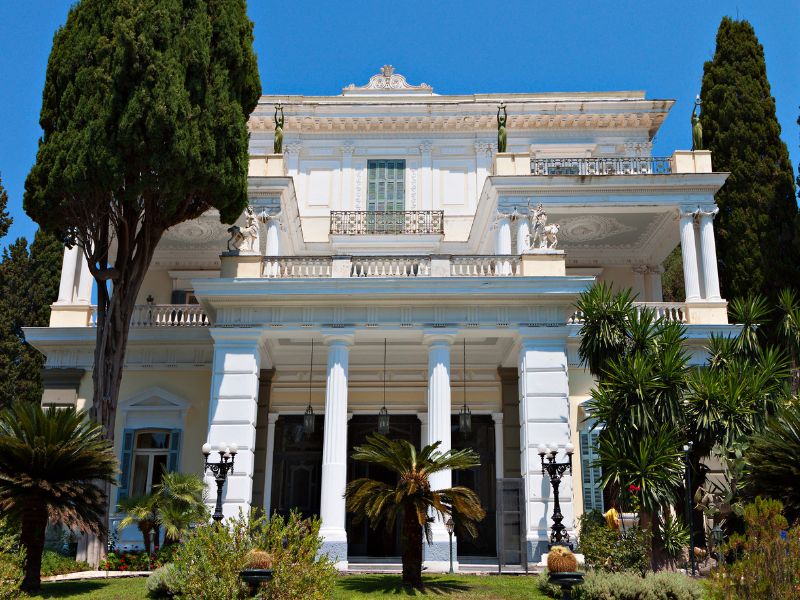Table of Contents
Ferdinand von Miller was a renowned German artisan, particularly famous for his outstanding work as a sculptor and bronze caster. In the world of architecture and art, his name is indelibly linked with the Achilleion Palace in Corfu, Greece.
Commissioned by Empress Elisabeth of Austria who wished to pay homage to the Greek hero Achilles, Miller was entrusted with the creation of numerous statues that adorn the palace. His masterful work significantly enhances the palace’s aesthetic appeal, making it an architectural marvel that continues to awe visitors even today.
Early Years of Ferdinand von Miller
Ferdinand von Miller was born on 18th June 1813, in Fürstenfeldbruck, a charming town in Bavaria, Germany. His family was artistically inclined, setting the foundation for young Miller’s affinity towards art.

His father, Johann Martin Miller, was a respected bronze caster who introduced him to the world of sculpture and motivated his interest in the family craft. Miller’s early years were significantly influenced by his father’s workshop, where he explored various techniques and materials, sowing the seeds of what would become his life-long passion.
His talent and fascination with sculpting manifested early, and he soon found himself journeying towards a path that would make his name synonymous with marvellous architectural masterpieces.
The career and life of Ferdinand von Miller
Ferdinand von Miller embarked on his remarkable career by enrolling in the prestigious Academy of Fine Arts in Munich, where he honed his sculpting and casting skills. After completing his studies, Miller undertook a journey across Europe, visiting Italy, France, and England. These travels significantly influenced his artistic style, providing him with a broader perspective on art and architecture.
In 1837, he began managing the Royal Bronze Foundry in Munich, following in his father’s footsteps. His adept management and skillful mastery of the craft soon led to the foundry’s international recognition.
The foundry produced a number of noteworthy public works, including the Bavaria statue in Munich, the statue of Albert, Prince Consort at the Albert Memorial in London, and of course, the magnificent sculptures at the Achilleion Palace.

Despite his demanding career, Miller found time for his personal life. He married Anna Pichler, with whom he had eight children. Their family life was marked by a shared love for art, with several of their children following in their father’s creative footsteps.
Miller’s career spanned over several decades, during which he created numerous sculptures that would immortalize his name in the world of art. He passed away on 11th December 1887, leaving behind a legacy of exceptional artistic creations that continue to inspire awe and admiration.
The legacy of Ferdinand von Miller

Ferdinand von Miller’s legacy extends far beyond his lifetime, immortalised in the bronze sculptures and architectural masterpieces he left behind.
His works, which grace various parts of the globe, continue to be celebrated for their artistic merit and architectural brilliance, reminding us of a golden era in art history.
Miller’s contribution to the art world is undeniable, with his sculptures not only beautifying public spaces but also serving as significant landmarks that encapsulate the cultural and historical aspects of their locations.
The Achilleion Palace, in particular, stands as a testament to his unparalleled talent, its numerous sculptures breathing life into the mythology of Achilles and enhancing the grandeur of the structure. Furthermore, Miller’s influence lives on through his descendants, many of whom have followed in his creative footsteps, ensuring that his passion for art continues to flourish in generations to come. In essence, Ferdinand von Miller’s legacy is one of enduring artistic excellence, perpetuated through his timeless creations and their impact on global art and architecture.
Ferdinand von Miller and his relationship to Achilleion Palace
Ferdinand von Miller’s relationship with the Achilleion Palace is a fascinating tale, intertwining the artist’s personal journey with the creation of one of his most momentous works. Commissioned by Empress Elisabeth of Austria, also known as Sisi, Miller’s task was to bring the grandeur of Greek mythology to life. He poured his efforts into crafting numerous statues that would reflect the mythical grandeur of Achilles and amplify the palace’s architectural splendour, a task he executed with extraordinary finesse.

The connection between Miller and Achilleion Palace extends beyond the physical works he produced. The palace became a testament to his mastery of the craft, and his ability to blend art with architecture, ultimately capturing the essence of the classical era in his sculptures.
The Achilleion Palace, thus, stands as a symbol of Miller’s unparalleled talent and the pinnacle of his artistic career. It attests to his capacity to weave narratives through bronze, and his genius in capturing the spirit of a hero from Greek mythology in a way that resonates with audiences even today.
The sculptures of Ferdinand von Miller that adorn the Achilleion Palace are nothing short of masterpieces, embodying the grandeur and heroism of Achilles, the Greek hero. These sculptures, steeped in the rich lore of Greek mythology, add a profound depth to the palace’s narrative and architecture.
The most remarkable of these is the ‘Dying Achilles’, a poignant depiction of the hero’s mortality that captures his final moments with an emotional intensity rarely seen in bronze. Another notable creation is the larger than life ‘Victorious Achilles’, a triumphant portrayal of the hero in his prime. This sculpture embodies the heroic ideal and anchors the palace’s architectural aesthetics.
Each sculpture, with its intricate detailing and evocative storytelling, serves as a testament to Miller’s remarkable ability to breathe life into bronze, making the Achilleion Palace not just a building, but a canvas of mythical storytelling.
His work at the palace ensures that visitors, while marveling at the architectural brilliance, are also transported back to the heroic age of Achilles, further enhancing their experience of this magnificent structure.

Moreover, Miller’s association with the palace played a crucial role in building his international reputation. His sculptures not only caught the attention of those who visited the palace but also art enthusiasts beyond the Greek borders.
The sculptures at Achilleion Palace represent his unique artistic style, and they have become synonymous with his name, solidifying his status in the annals of art history. Hence, the relationship of Ferdinand von Miller and Achilleion Palace is not merely that of an artist and his canvas, but a bond that immortalised his name in the world of art and architecture.
Further Research
For further exploration into the life and works of Ferdinand von Miller, consider the following resources:
- Ferdinand von Miller – Wikipedia: This Wikipedia page provides a comprehensive overview of Miller’s life, career, and notable works.
- Achilleion: Sisi’s palace on Corfu with the tragic Achilles: This article delves into the relationship between Miller and the Achilleion Palace, detailing the artist’s contributions and their impact on the palace’s architectural splendour.
- The Bavaria Statue – Munich: An account of one of Miller’s renowned public works, the Bavaria statue, highlighting its significance and the artistic prowess of Miller.
- Ferdinand von Miller – Oxford Reference: An Oxford Reference entry that provides succinct information about Miller’s career and impact on the art world.